I began fly fishing at around eight years old and very soon became addicted to the sport. I practiced as often as possible and was taught by arguably one of the best fishermen to have ever waded a stream; Kim Tribe. Kim’s home waters were in Brecon, Wales — a region known for its lakes and long river systems. Because I was so small at eight years old, he handed me a ‘mini’ 6”, 2-3 weight Greys Missionary, a rod that has since become a collection piece. Because I was unable to wade in the fast flowing Welsh rivers, I began my fly fishing journey mainly on creeks and small streams. Despite learning the intricacies of the sport while surrounded on all sides by bushes, branches and vines, I persevered and was soon promoted to the larger river systems, much to my delight. Since then, I have left the Welsh river systems and have traveled to the worlds largest river systems, hunting trophy brown trout, artic char and salmon. But today, I retrace my roots to the smaller streams, where truly ‘wild’ fishing is still found, and where I find more satisfaction in my fishing.
Small stream fishing presents challenges that can be very different from its larger stream counterpart, but heading to these waters with the right approach can help you reap the unique rewards they offer.
Fly Rod Length
Choosing the Proper Length Rod is extremely important. If you only own a 9′ 6 fly rod you might want to do some shopping, because you will have a difficult time casting in the typical small stream environment which is most often characterized by dense trees, a prevalence of bushes and tight spaces. Another factor to consider is rod weight; using a stiff 6 weight you will not be able to load line on the short accurate casts needed for effective small stream fishing. This is the only occasion where your best choice for good casting will be a 6-7 foot long, 2-4 weight rod. Most fishermen don’t own a rod this size, but everyone should. Try casting a 6 weight all day and suddenly picking up a 2 weight, you’ll thank me.
Fish your way Upstream Not Down
If you try to walk down stream and fish for trout, you will stir up the water and greatly affect your success. One step into a muddy bank or mucky sediment and you could all but ruin your chances of catching a fish for a while. I recently watched a video online where an angler placed an underwater camera in a small creek and came back an hour later, downstream, to attempt to catch a fish on camera. The angler’s approach was announced on the footage by extremely muddy water. Interestingly, the trout became a little more active and excited when a small amount of debris came down, but very soon the fish became spooky and fled. Also, approaching a fish upstream means you are approaching it from behind and it is less likely to spot you.
Use a Short Leader
You can save your 12 foot leaders on small river trips, they will only cause you unnecessary anguish. I usually tie up a small 6′ leader with 4-5x tippet and leave it at that. The longer your leader is the more ‘tree-fish’ it can catch on back casts, not to mention it will give you less control and accuracy when casting around tight obstacles.
Roll Cast
Sometimes, even smaller leaders don’t help. Learn to roll cast. Roll casting is pretty basic and you can get good at it with very little practice. Once you master this cast you will find that 90% of the time it will be your go-to option while fishing in small creeks.
Fly Choices
Obviously, it’s impossible for me to predict what will be hatching or what will be the best fly for your small creek, but I have noticed that smaller stream trout like bigger flies just as much if not more than small flies that more accurately imitate the bugs on the water. The commonly held explanation for this is that, since most small creeks don’t offer a lot of food, the trout are more aggressive to the options that do appear. Thus, bigger flies get gobbled just as well as smaller ones. Matching the hatch is also less important since food is scarce in small streams, fish will thus be happy to eat food whenever it appears.
Small Streams may offer smaller fish, but they also present an angler with much tougher conditions, so regardless of the size, a fish feels like a great achievement. These small streams, once mastered, truly create satisfaction.




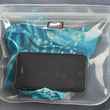


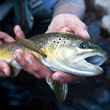




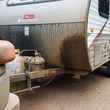




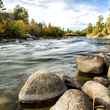



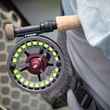
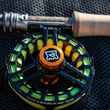



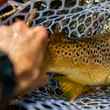
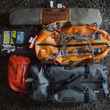


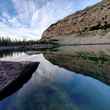

Comments
Lyndon Skinner replied on Permalink
Having fished small streams for 59 of my 73 years, I have finally read an article in which the author, Mr. Huet, knows what he is talking about. All of his advice coincides exactly with what I have learned over the years. Well done, sir!
Constantin Huet replied on Permalink
Dear Mr.Skinner,
Thank you very much for your kind message. I'm pleased to hear that many fishermen enjoy small streams as much as I do.
Tight lines,
Constantin
Will replied on Permalink
I live in Colorado, 500 yards from a gold medal strip of the Arkansas, and have to tell you that sight fishing the upper creeks is way more rewarding. The solitude, beauty - and just the stealth needed, it's exciting. If I'm after big fish I'll go to one of the reservoirs and cast bait for macks. Aside from that I prefer the streams.
Pages